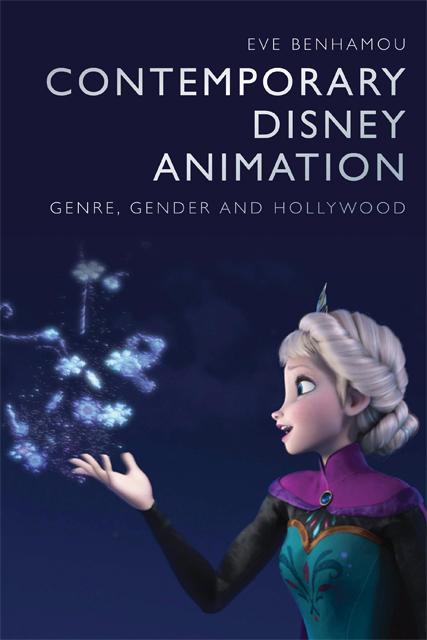2 - Reanimating Fantasies of Fairy-tale Romance: Disney Nostalgia and The Princess and the Frog
Published online by Cambridge University Press: 14 July 2023
Summary
We’re subject to huge scrutiny every time we come out with something new, especially a film like this, that is right in Disney’s pocket … It’s what we’re supposed to do well – fairy tales, animation, and musicals. (Byron Howard, quoted in Kurtti 2010: 44)
Following the success of Enchanted (Kevin Lima, 2007), Disney’s subsequent animated fairy tales represented a cohesive generic cycle which stood out within contemporary Hollywood animation. The Princess and the Frog (Ron Clements and John Musker, 2009), Tangled (Nathan Greno and Byron Howard, 2010) and Frozen (Chris Buck and Jennifer Lee, 2013) revived and renewed the studio’s formula by engaging with contemporary genres of romance and with fairy tales beyond the Disney canon. As the studio’s first post-Shrek hand-drawn animated fairy-tale musical, The Princess and the Frog was a spectacularly nostalgic reclaiming of the Disney formula. At the same time, these nostalgic impulses were accompanied and mediated by unprecedented semantic and syntactic reconfigurations: the film focuses on a black waitress who dreams of opening a restaurant in 1920s New Orleans, falls in love and marries a prince to whom she is initially opposed in every way. For this film, Disney was subject to ‘huge scrutiny’ not only because it released an animated fairy-tale musical but also and especially because of its history of racial and gender representation.
As Mike Budd observes, ‘critiques of Disney’s representations of African Americans and other racial groups are almost as old as the company’s habit of caricaturing such groups’ (2005: 20). Numerous authors have examined Disney’s recurring association of anthropomorphism and racial stereotypes regarding Chinese people, African Americans and Native Americans in films such as Lady and the Tramp (Clyde Geronimi and Wilfred Jackson, 1955), The Jungle Book (Wolfgang Reitherman, 1967) and Brother Bear (Aaron Blaise and Robert Walker, 2003). Writing on 1980s and 1990s animation, authors such as Natchee Blu Barnd argue that Disney applies racial attributes to ‘clearly marked Others’, while whiteness remains invisible yet privileged (2013: 69).
- Type
- Chapter
- Information
- Contemporary Disney AnimationGenre, Gender and Hollywood, pp. 51 - 76Publisher: Edinburgh University PressPrint publication year: 2022



